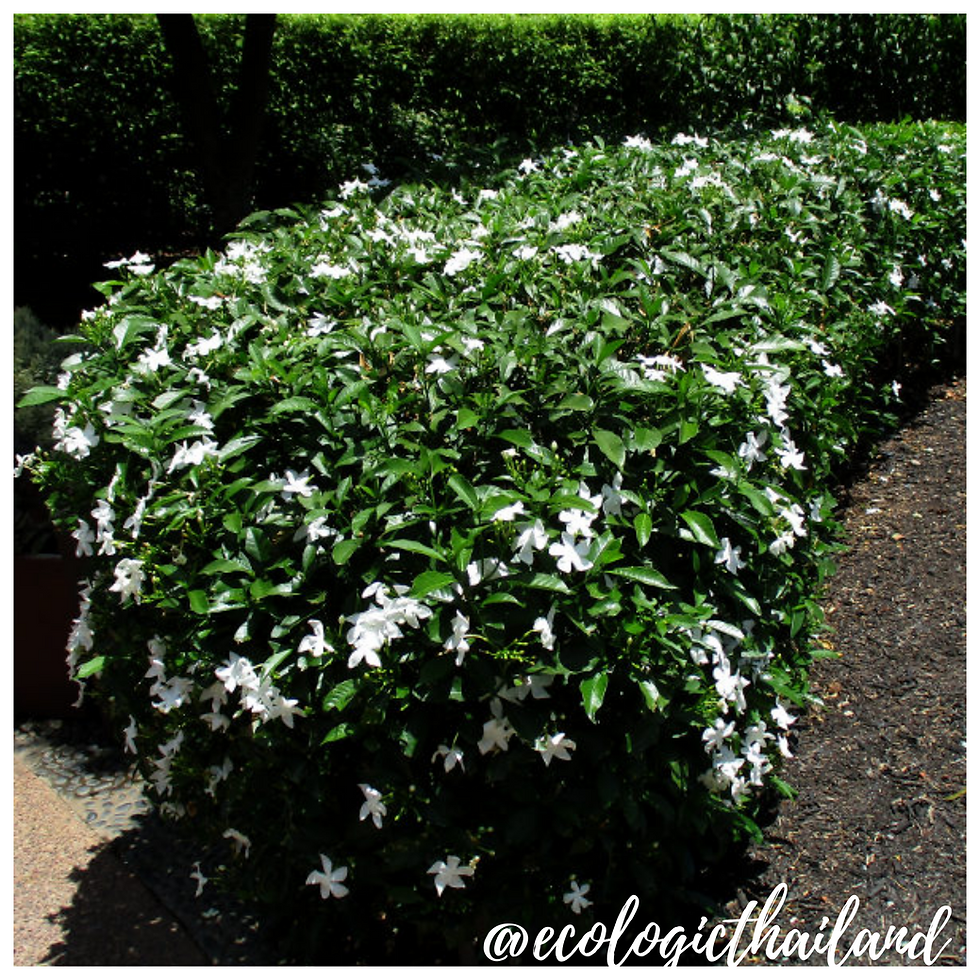Smooth Luffa (Loofah)
- Eco-Logic Resort
- Dec 31, 2020
- 2 min read
Buap hom | บวบหอม | Luffa aegyptiaca
Family: Cucurbitaceae - Genus: Luffa

The vines of the luffa plant can be found at the aqua hydroponic greenhouse of the Thai Child Development Foundation.
Luffa, also know as sponge gourd, is an annual vine cultivated for its fruit.
The fruit, approximately 30 centimeter long, resembles a cucumber in shape and size.
The young fruit is eaten as a vegetable and is commonly grown for that purpose in Thailand.
Unlike the young fruit, the fully ripened fruit is strongly fibrous and inedible, and is used to make scrubbing bath sponges.
Best grown in the rainy season, planting in May/ June. Harvest in August - September.

THE PLANT
Lufa is a vine-grown member of the pumpkin, squash and gourd family, Cucurbitaceae. Luffa grows slowly and matures well into the rainy season. Luffa vines grow vigorously, sometimes as long as 10 meter. When provided an overhead trellis, the vines’ tendrils twine and wind up and across overhead supports. Eye-catching, sunshine-yellow flowers appear on the plant, which attract bees, ants and other pollinators. After the flowers are spent, elongated fruits form up and down the vines.

THE LEAVES
The leaves are an abundant summer leafy green – always there to pick. The young leaves can be eaten raw.

THE FLOWERS
The luffa gourd produces large number of male and female flowers.
They are yellow or orange and 2 to 3 inches in diameter.
The beautiful large flowers of the luffa are also edible.

THE FRUIT
Fruit is long, light green with stripes. Plant is very productive and strong, can handle many days of heavy rain. Young fruits are cooked and eaten, while fully mature and dry fruit yield seed and the luffa which can be used as a sponge or shower scrub.
CULINARY USES
Luffa is used in stir-fries, in curries and in Kaeng type soups.
The taste of the fruit resembles zucchinis.
The leaves and flowers are edible too.
NUTRITION
Luffa fruit contains various antioxidants, minerals, vitamins, nutrients and lipids. It is an excellent source of Vitamin A and carbohydrates. It is also a very good source of Vitamin B5, Manganese, Potassium, Copper, Total dietary fiber, Vitamin B6, Vitamin C and Magnesium.
TRADITIONAL MEDICINAL USE
NOTE: please take advice from a doctor if you are planning to use herbal medicine.
The fibers of the old luffa fruit can be boiled in water, which can then be used as medicine.
Luffa is taken by mouth for treating and preventing colds. It is also said to be used for nasal swelling and sinus problems. It has been said to be benificial for arthritis pain, muscle pain, and chest pain.
Women can use luffa to restore absent menstrual periods. Nursing mothers use it to increase milk flow.
INTO THE WILD: a down to earth experience

For guests and visitors to Paksong we organize weekly tours "The Edible Forest" and Foraging weekends: Into the Wild. We work with local guides to take you in the jungle of Paksong. After foraging, we will cook a meal with the ingredients, using bamboo together with you!
Come and join and learn about the abundance of food that nature gives us!
INTO THE WILD!


















Comments